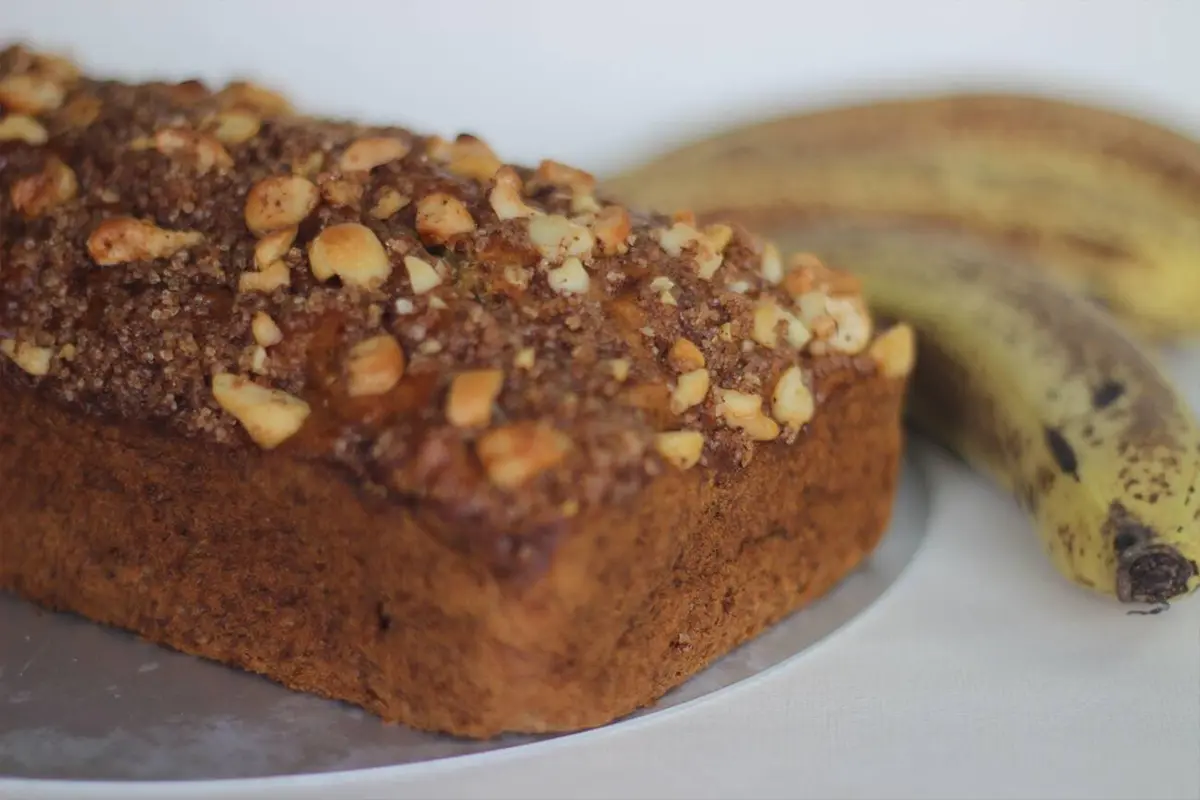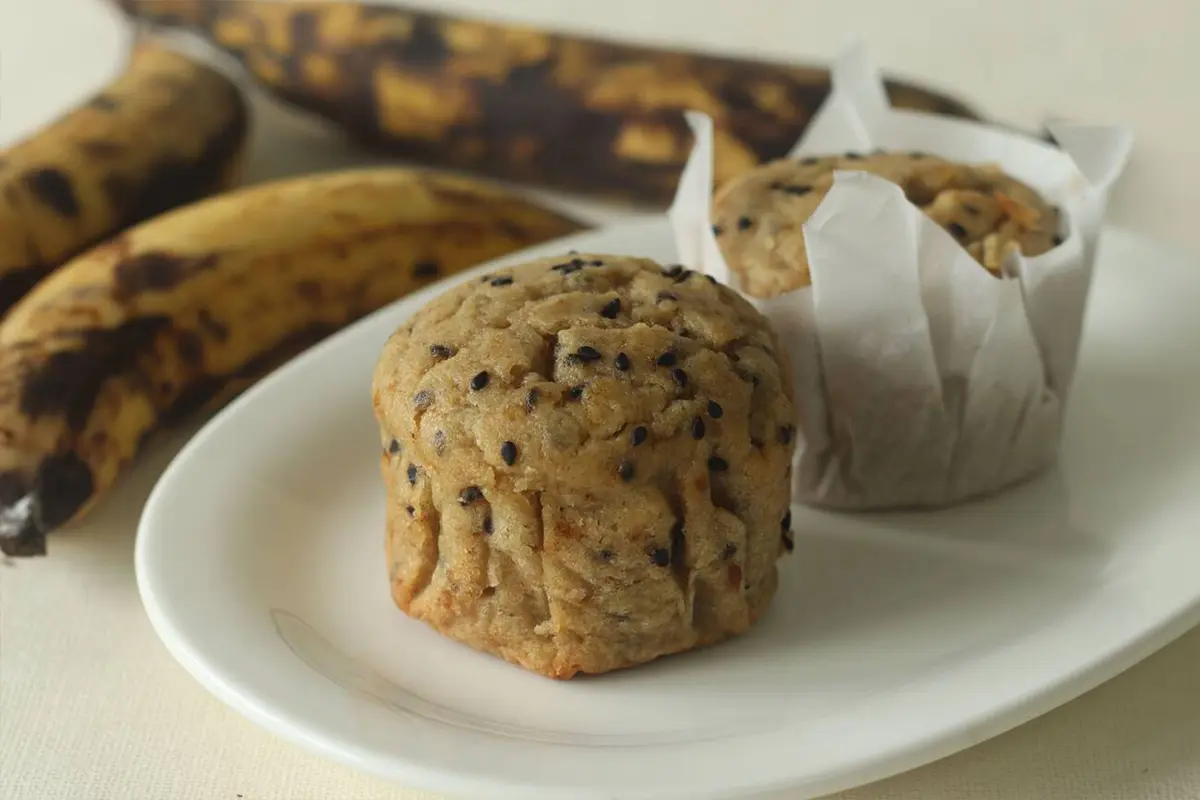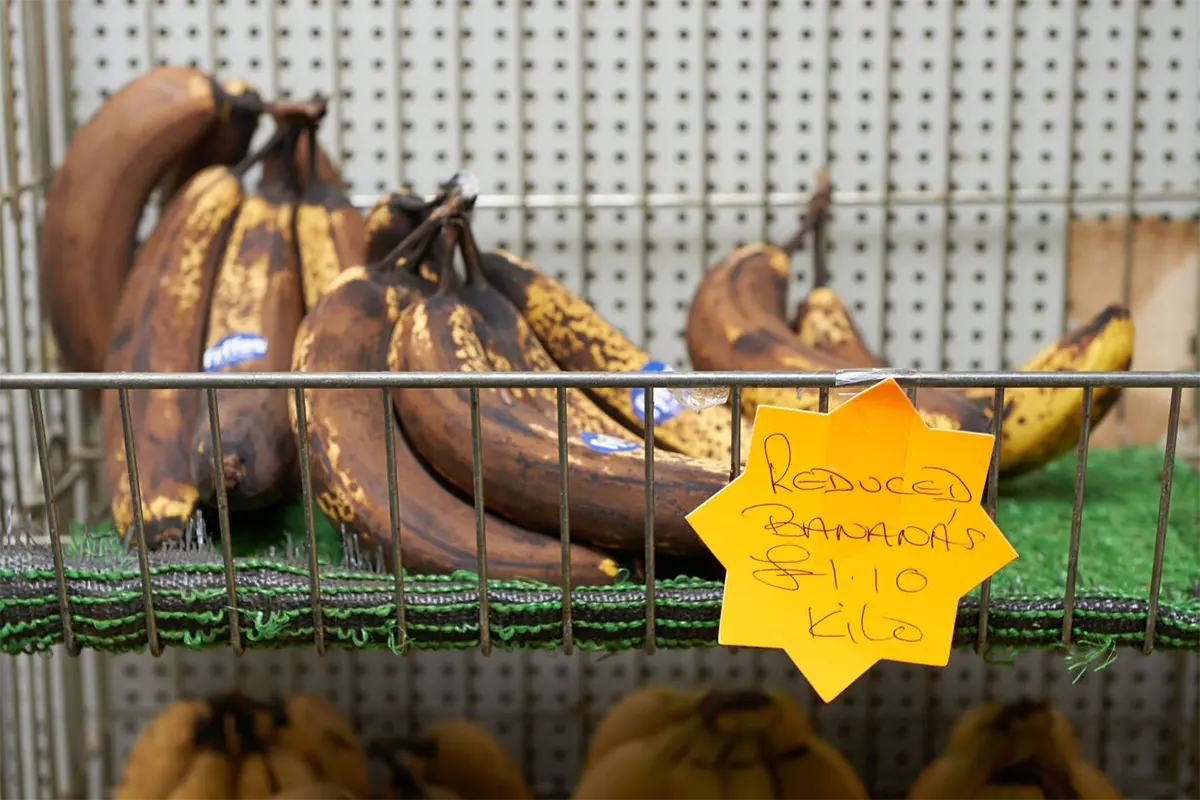Banana bread, a cozy favorite, consistently survives baking fads. Yet, it sparks heated debates about the best type of bananas to use. In this guide, we’ll strip away myths, delve into the science behind starch and sugars, and offer fresh insights on this cherished treat. So, prepare to rethink everything you know about banana bread and the humble fruit at its core!
The Great Banana Bread Debate: To Ripen or Not to Ripen
Banana bread—just the name fills the air with a delicious aroma. But before you start mashing those speckled bananas, let’s tackle a ripe debate. Is it truly necessary to use overripe bananas for the best banana bread, or is this merely a misconception?
To start, we must debunk a widespread belief. Many assume that overripe bananas are the key to moist, flavorful bread. However, the reality might startle you. While ripe bananas indeed add moisture and sweetness, they aren’t the only path to scrumptious bread. This article will investigate how the ripeness of your bananas can significantly impact your baking, often in ways you might not expect.
Moreover, understanding the role of bananas in banana bread extends beyond their contribution to sweetness or moisture. It’s crucial to consider how they meld with other ingredients, affecting everything from the texture to the flavor. As we dig deeper into these interactions, you’ll discover that the ideal banana for your bread may not be the one that’s turning black on your countertop. Therefore, let’s dust off our aprons and open our minds as we explore more about banana bread and its star ingredient!
Understanding Bananas and Their Ripeness
The Science of Banana Ripeness
Bananas undergo significant chemical changes as they ripen. They start with high levels of starch which gradually convert into sugars. This process not only sweetens the fruit but also softens it, transitioning from firm and bland to soft and sweet. These changes make ripe bananas ideal for baking.
The Impact of Starch and Sugar Conversion
The transformation of starch into sugar in bananas is crucial for enhancing banana bread’s flavor and texture. Using ripe bananas, which contain more sugar than starch, adds a deep sweetness and contributes to a moist, tender crumb. This moisture is essential for preventing a dry, crumbly loaf. By understanding this starch-to-sugar conversion, you can choose bananas that best suit your desired bread sweetness and texture.
Let’s delve deeper into how this conversion affects the baking process and how we can use this knowledge to perfect banana bread. Armed with these insights, you can adjust recipes to achieve maximum flavor and the ideal texture.
The Role of Bananas in Banana Bread
Why Bananas Matter in Banana Bread
Bananas do much more than just add flavor to banana bread. They are integral to the structure and overall success of the bake. As the primary wet ingredient, bananas deeply influence the bread’s texture and density. Moreover, the natural sugars within the bananas caramelize during baking, enhancing the golden color and rich taste of the crust.
Moisture and Consistency: A Delicate Balance
The moisture content of bananas plays a critical role in the texture of banana bread. It helps create a loaf that is soft and tender, yet firm enough to slice neatly. Too little moisture, and the bread turns out dry and crumbly; too much, and it may be soggy or undercooked. Striking the right balance is key, and choosing the correct ripeness of bananas can make all the difference. Ripe bananas, with their increased sugar and moisture content, often provide just the right consistency for a moist yet structurally sound loaf.
In conclusion, the choice of banana—particularly its stage of ripeness—affects every aspect of the bread, from its moisture balance to its flavor profile. Let’s keep these factors in mind as we perfect our banana bread recipes. With this knowledge, we can tailor each batch to achieve optimal results, ensuring delicious, well-textured loaves every time.

The Myth of Overripe Bananas
Debunking the Overripe Banana Myth
The common belief that overripe bananas are essential for banana bread needs reevaluation. While these bananas do offer increased sweetness and moisture, they are not always necessary for a successful bake. In fact, overripe bananas can sometimes make the bread too wet or dense. Research and baking tests show that the ripeness of the banana should match the specific texture and flavor profile you are aiming for in your bread.
The Case for Using Just Ripe Bananas
There’s a strong argument for using just ripe bananas in baking. These bananas maintain a firmer structure, which helps prevent the bread from becoming too mushy. They also have a balanced sweetness that isn’t overpowering, allowing the flavors of other ingredients to shine through. Using just ripe bananas can result in a bread that is moist yet fluffy, with a perfect crumb that holds together well.
Moreover, just ripe bananas are easier to mix into the batter, ensuring a uniform distribution of fruit throughout the loaf. This balance is crucial for achieving a consistent texture in every slice. Let’s continue to challenge old baking myths and embrace the versatility of using just ripe bananas for a lighter, more balanced banana bread.
Recipe Highlight
Ingredients:
- 3 ripe bananas, mashed
- 1/3 cup melted butter
- 1 teaspoon baking soda
- Pinch of salt
- 3/4 cup sugar
- 1 large egg, beaten
- 1 teaspoon vanilla extract
- 1 1/2 cups of all-purpose flour
Directions:
- Firstly, preheat your oven to 350°F (175°C) and generously butter a 4×8-inch loaf pan.
- In a mixing bowl, mash the ripe bananas with a fork until smooth. Then, stir the melted butter into the mashed bananas.
- Next, mix in the baking soda and salt. Subsequently, stir in the sugar, beaten egg, and vanilla extract. Finally, mix in the flour until just combined.
- Pour the batter into the prepared loaf pan. Bake for 50-60 minutes at 350°F (175°C), or until a tester inserted into the center comes out clean.
- After removing from the oven, let the bread cool in the pan for a few minutes. Then, turn it out onto a wire rack to cool completely before slicing.
Tips for Perfect Banana Bread:
- Banana Selection: Initially, choose bananas that are ripe but firm, with just a few brown spots. This ensures your bread has the right level of sweetness and moisture without being too mushy.
- Mixing Technique: Furthermore, avoid over-mixing the batter. Mix just until the ingredients are combined, as over-mixing can make the bread tough.
- Baking Time: Each oven is different, so start checking your bread at 50 minutes. The bread is done when a toothpick or skewer inserted into the center comes out clean or with just a few moist crumbs.
Exploring Alternatives to Traditional Ingredients
Transitioning from traditional ingredients can bring a new twist to banana bread, making it suitable for various dietary preferences and enhancing its flavor profile.
Bananas: The Core Ingredient At the heart of every banana bread recipe are the bananas themselves. For a different taste or when bananas aren’t available, you might consider using applesauce or mashed avocados. Both options maintain the moisture but alter the bread’s flavor—applesauce adds a mild sweetness and a hint of apple, while avocados offer a more neutral taste, perfect for adding nuts or chocolate chips without overpowering their flavors.
Flour Choices Switching the type of flour can drastically change the texture and nutritional content of your bread. Almond flour or oat flour are excellent choices for those seeking a gluten-free alternative, though they may make the bread denser. To counteract this, consider increasing the amount of baking soda slightly to enhance leavening.
Sweeteners For those reducing sugar intake, replacing sugar with honey or maple syrup can add depth to the flavor profile. Use three-quarters of a cup of honey or maple syrup for every cup of sugar, and reduce other liquids in the recipe slightly to maintain consistency.
The Role of Fats: Butter vs. Oil
The choice between butter and oil in baking not only affects the flavor but also the texture of banana bread.
Butter for Flavor Butter adds a rich flavor and creamy texture. When using butter as in the original recipe, melt it as instructed, ensuring it is cooled before mixing to prevent cooking the eggs.
Oil for Moisture Oils like canola or vegetable provide more moisture and make the bread softer and more tender. They are also a heart-healthier fat due to their lower saturated fat content. When substituting oil for butter, use a one-to-one ratio, but expect a slightly different texture and less of the distinct buttery flavor.
Through these substitutions and ingredient changes, you can customize banana bread to better suit your tastes and dietary needs, experimenting with flavors and textures while maintaining the beloved classic’s essence. Each ingredient plays a pivotal role, whether you stick to the tradition or venture into new culinary territories with alternative options.
Mastering Banana Bread: Advanced Techniques
Improving banana bread involves small, clever tweaks that can significantly enhance both texture and flavor.
Professional Tips for Enhanced Texture Firstly, consider the ripeness of your bananas. The darker and more spotted, the better—these bananas not only bring a stronger banana flavor but also increase the moisture content, crucial for a soft, tender loaf. Secondly, add a tablespoon of yogurt or sour cream to the batter. This tip introduces extra fat and acidity, improving the bread’s rise and tenderness.
Flavor Boosting Add-Ins To elevate the flavor, incorporate spices such as cinnamon, nutmeg, or even cardamom. These spices complement the sweetness of the bananas and add a warm, aromatic quality. Additionally, a splash of dark rum or a teaspoon of almond extract can introduce new flavor dimensions that make your banana bread stand out.
The Secret to a Perfect Loaf: The Knife Trick
Achieving a perfect crack on the top of your banana bread not only makes it visually appealing but also signifies a well-baked loaf.
Scoring the Dough Before baking, take a sharp knife and gently score the top of your banana bread batter in a long, shallow line down the center. This trick allows the heat to penetrate more evenly in the center during baking, which helps the loaf rise beautifully and create a stunning, professional-looking crack along the top.
Why It Works Scoring helps control the direction in which the bread expands. Without a scored line, the bread might crack unpredictably, resulting in an uneven top. The knife trick ensures your banana bread not only tastes great but also looks impeccable.
By applying these advanced techniques, you’ll transform a simple banana bread into a masterpiece of flavor and texture, impressing both yourself and your guests with your baking prowess.
Answering Your Banana Bread Questions
Here, we tackle some frequently asked questions about making banana bread, drawing on common queries that arise.
Can I Use Frozen Bananas for Banana Bread? Absolutely, using frozen bananas is a great choice. Firstly, thaw them and drain any excess liquid before using. This method not only helps manage your ripe bananas but also ensures they’re ready for baking anytime.
What Makes Banana Bread Moist? The key to moist banana bread lies in using enough bananas. Secondly, ingredients like oil or yogurt can boost moisture. Make sure not to overbake as it dries out the bread.
How Do I Keep Banana Bread from Sticking to the Pan? To prevent sticking, thoroughly grease your baking pan and line it with parchment paper. Also, letting the bread cool for a few minutes before removing it from the pan can be very helpful.
Why Does My Banana Bread Sink in the Middle? If your banana bread sinks, it might be underbanked or have too much leavening agent like baking soda. Ensure you measure ingredients precisely and bake until a toothpick comes out clean.
Can I Make Banana Bread Gluten-Free? Yes, you can make banana bread gluten-free by substituting all-purpose flour with a gluten-free flour blend. Also, check that all other ingredients are gluten-free.
What Are the Best Mix-Ins for Banana Bread? Popular mix-ins include nuts, chocolate chips, and dried fruit. Firstly, toss them in a small amount of flour before adding to prevent them from sinking.
Each of these tips addresses common concerns and helps ensure your banana bread turns out perfectly every time.

Beyond Bananas: The Journey to Perfect Banana Bread
To conclude, perfecting banana bread is an enjoyable and rewarding endeavor that allows for ample creativity in the kitchen.
Key Points to Remember Firstly, the choice of bananas is crucial; ripe bananas enhance flavor and moisture. Secondly, ingredient substitutions like using oil instead of butter can change the texture and healthiness of your bread. Moreover, simple techniques like the knife trick help achieve a professional look.
Encouragement to Experiment Experimenting with your banana bread recipe is highly encouraged. Try different add-ins like nuts or spices to find your preferred flavor profile. Also, adjusting the type of flour can cater to dietary needs without sacrificing taste.
Call to Action Start baking today! Use the tips and techniques shared here to bake a loaf that not only looks great but also satisfies your taste buds. Share your variations and results with friends or on social media to inspire others in their baking journeys.
Embrace the process and enjoy every slice of your homemade banana bread, knowing that each ingredient and step you choose brings uniqueness to your creation.
LSI and NLP Keywords:
- Ripe bananas, starch conversion, sugar content, banana moisture, baking science, banana bread texture, ingredient alternatives, overripe bananas, banana bread moisture, baking tips, banana bread myths, recipe adjustments, bread consistency, professional baking techniques.
External Links:
- King Arthur Baking on using bananas for banana bread: The Best Bananas for Banana Bread – A detailed exploration of the best type of bananas for banana bread.
- Handle the Heat for an alternative banana bread recipe: Best Ever EASY Banana Bread Recipe – An easy and delicious banana bread recipe.
- Pastry & Baking Forum for baking tips and banana storage: Banana Bread: Tips & Techniques – Insights on banana bread baking techniques and how to store bananas.

